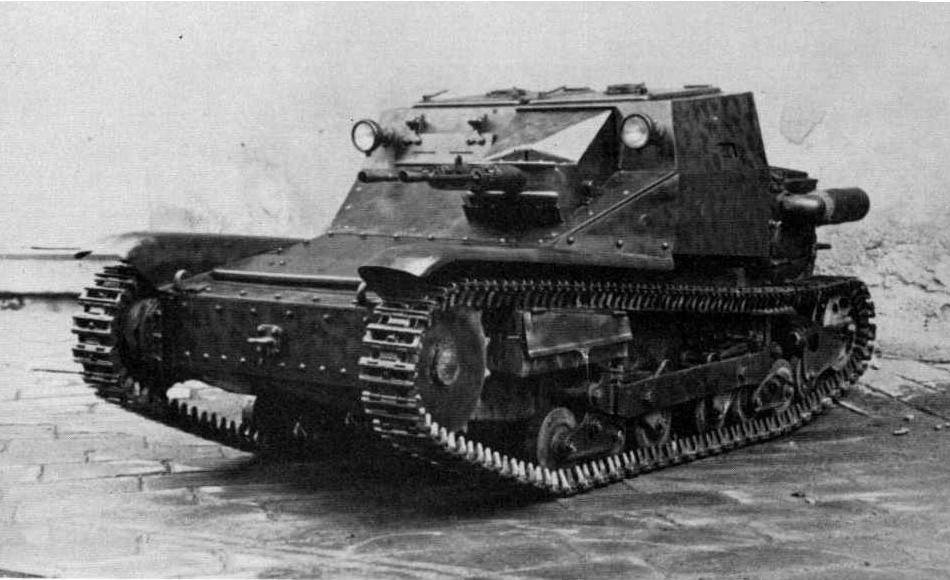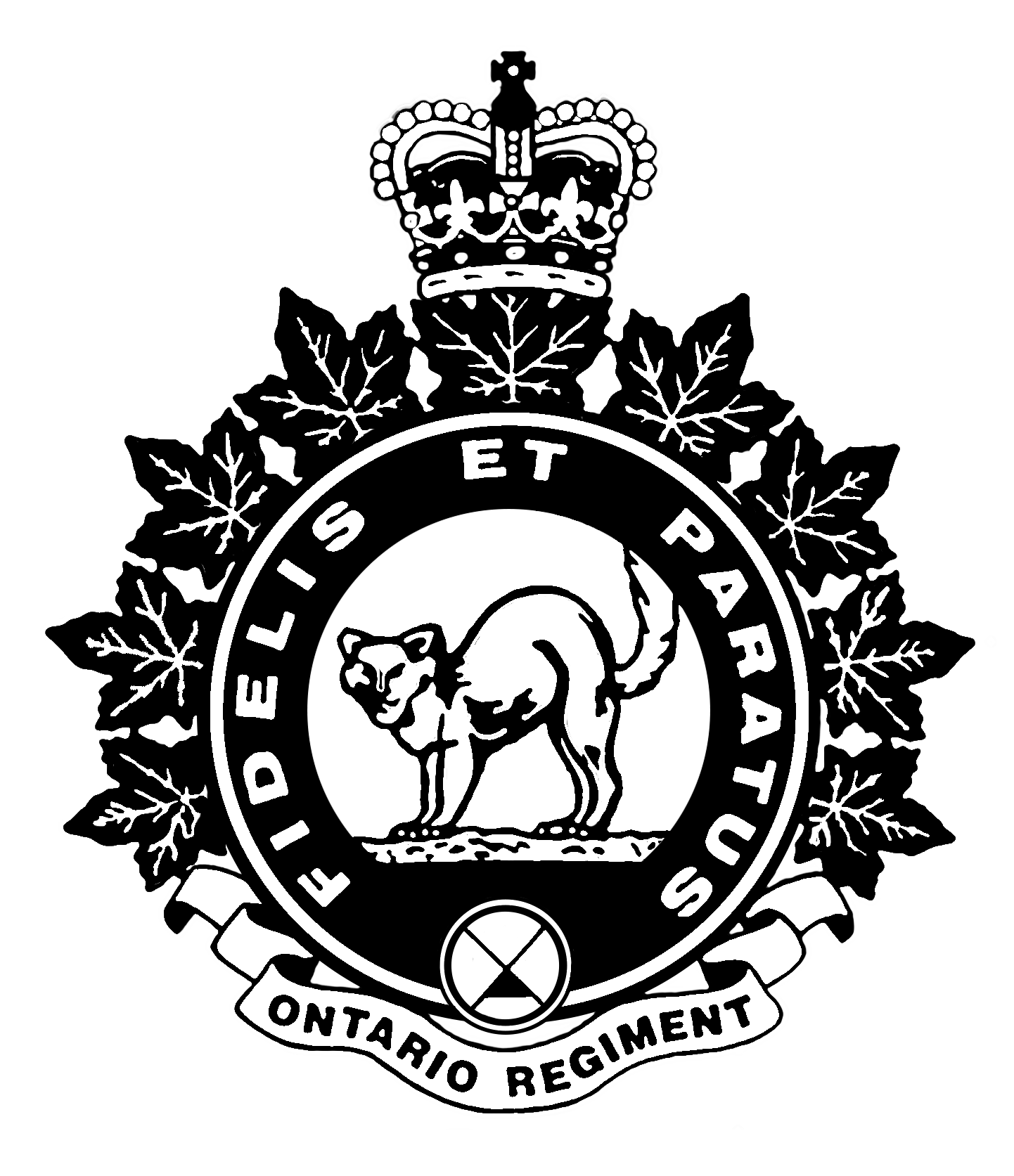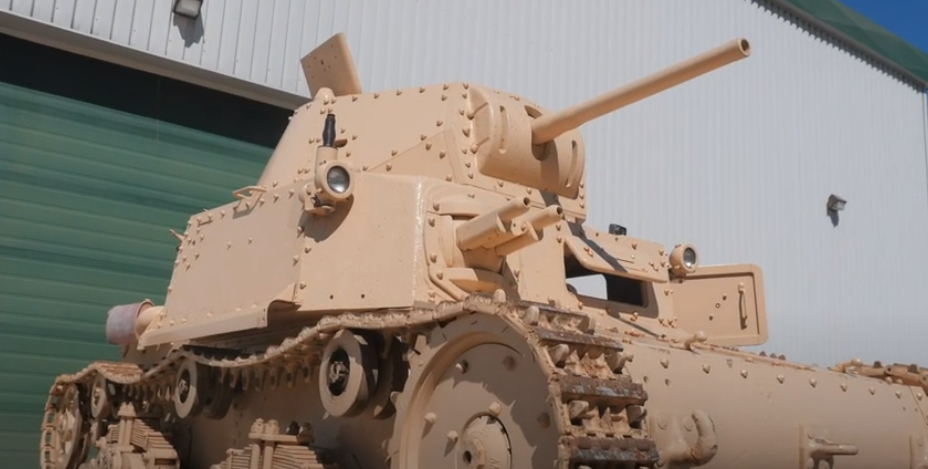Quick Facts:
Dimensions (L-W-H): 5m X 2.3m X 2.4m
Total weight (Battle) : 14,500 kg
Crew: 4 (Driver, Loader, MG Gunner/Radio Operator, Commander/Gunner)
Propulsion: V-8 Diesel, 145 hp
Speed: 33 km/h
Suspension: Leaf Spring
Range: 200 km
Armament: 47mm cannon, 4 X 8mm MGs (Co-ax, Anti air, 2 in Hull)
Armor: 42mm Turret Front to 25mm Hull, sides, and Rear
Note: Normally, the Vehicle of the Month is a Vehicle from our Museum. With the attendance at Aquino 2021 of the CFB Borden Museum and their M14/41. We decided to showcase their vehicle.
The Italians had a well-developed armor doctrine that closely paralleled the Germans’ blitzkrieg. They planned to utilize medium tanks to assault through the enemy and then exploit with light tanks. This defined the doctrine of “fuoco da manovra” (fire and maneuver) that called for artillery and antitank guns to be located close to the front line supported by infantry.
The chief deficiencies in Italian doctrine was the lack of tactical air support, a lack of radio equipment in the tanks, poor maintenance, and insufficient training. Historians have said “Italy had developed the concepts but lacked the materiel to implement them.”


Between the wars, Italy built the Renault FT under license and experimented with a Carden-Loyd variant. Its first locally produced tank was the Carro Veloce 33 of which 240 were built. In 1935, an upgraded CV 35 was produced with 2,800 built and exported to China, Brazil, Bolivia, and Bulgaria. Italy experimented with light tanks and armoured cars.

Italian Medium tank development began with (as with many countries) purchasing and reverse engineering a Vickers-Armstrong 6-ton tank. Italy’s tank development had been delayed due to a lack of automotive engineering and manufacturing expertise. The first tank was the Carro d’Assalto 9t. It was a turretless vehicle armed with a 65mm gun and a machine gun. This vehicle acted as a test bed from 1929 to 1937 but never went into production. The first production tank was the Carro d’Assalto 10t armed with a 37mm gun in a casemate with a small turret carrying 2 8mm MGs. 400 were ordered but only 100 were delivered.

The primary Italian tank of the time was the M13/40. This vehicle was heavier and put the cannon in the turret and the MGs in the hull. This medium tank provided the bulk of the offensive armoured power of the Italian army with over 700 delivered. It was surplanted by the M14/41; also considered a medium tank. Both were produced in Italy by Ansaldo in 1941 and 1942. Only 750 were built and the tank was considered obsolete even when first introduced.

At the time, there was discussion that the Italians would use the Panzer III in place but the Italian manufacturing sector including Ansaldo and FIAT stopped that plan.
This tank was an evolutionary step from its predecessor the M13/40; utilizing the same chassis but with a slightly more powerful FIAT engine and a new hull design. It did have a fully traversing turret. The hull is not cast or welded but riveted. During the 1940s, only Japan and Italy still primarily riveted their tanks. Note: Italian tanks are named M (for medio – Medium) 14 (weight 14 short tones) / 40 (first year of production). Note as well that at 14 tons, this tank was classed as a Medium by Italy but would have been classed as a light tank by any other army.
The M14/40 first saw action in the North Africa. It served with Italian 132nd and 133rd Tank Infantry Regiments. In Libya starting in December 1940, they went up against British forces where their tendency to catch fire had the Germans referring to them as Der Rollende Saerge (the Rolling Coffins). The M14 proved to be no match for the heavy British tanks of the time. They were unpopular, being described as cramped, noisy, and uncomfortable – not counting poorly armed, poorly armoured, and with the aforementioned ability to catch fire.
With the fall of North Africa, many M14s were captured and pressed into service by the British and the Australians. They were not used long and were replaced as soon as possible.

In 1942, the Italians replaced the M14s with the M15/42. This would be the most modern WW2 tank for the Italian Army. Due to the poor combat capability of the M13s and M14s and the delay in developing heavier tanks, the M15 was a stopgap solution based on need. The M15 increased the engine power to 190 hp and upgunned the main gun to 47mm. This would prove to be ineffective. 220 were produced and after the Italians joined the allies in 1943 – an additional 28 were built under German control.
After the Italian Armistice, the German Army confiscated all Italian Tanks and used them mostly in the Balkans.


